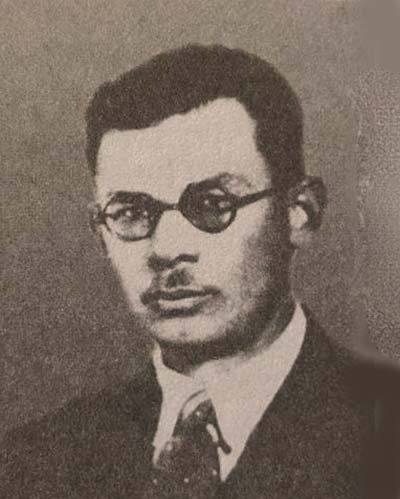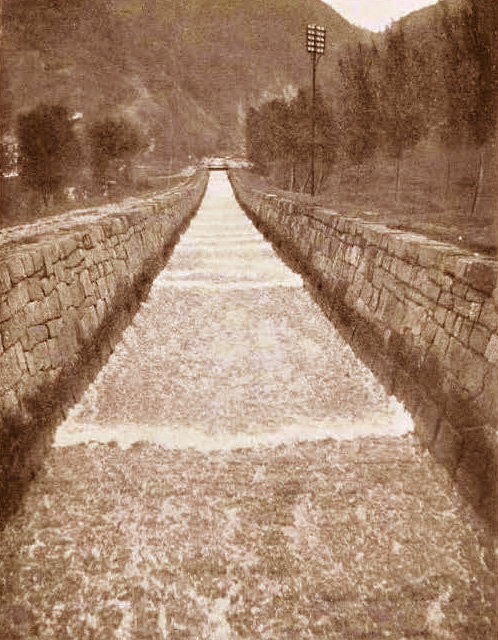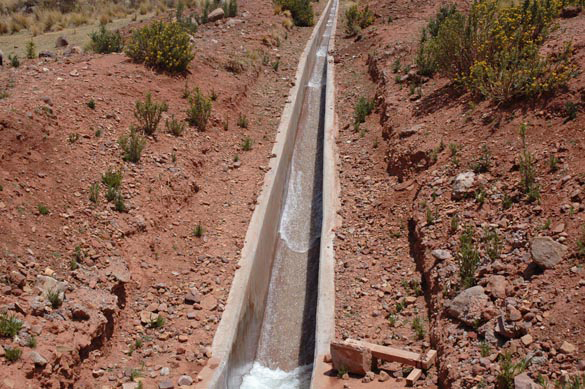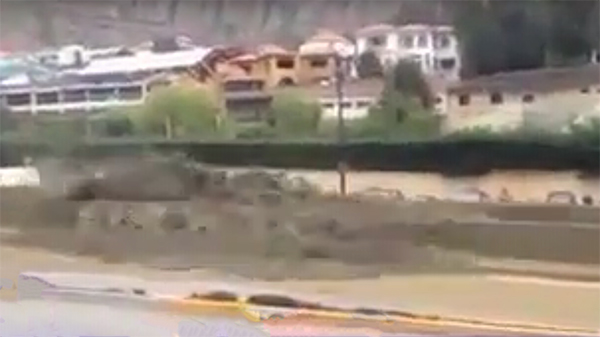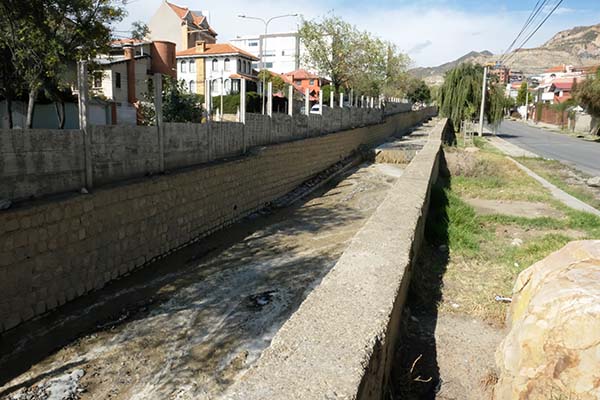THE VEDERNIKOV NUMBER
Professor Emeritus of Civil and Environmental Engineering
San Diego State University, San Diego,
California
1. INTRODUCTION
The Vedernikov number is one of four dimensionless numbers, or ratios,
in open-channel flow.
The Froude and Reynolds numbers have been well established for more than a century (Chow, 1959).
Ponce (1991a)
has presented the Froude (F) and Vedernikov (V) numbers
as essentially two parts of the same story,
arguing convincingly for their parallel treatment, which Chow (1959) somehow missed.
In open-channel hydraulics, the two numbers constitute a veritable duality,
because their ratio V/F is ostensibly equal to (β - 1), in which β is
the exponent of the discharge-flow area
rating
2. THE VEDERNIKOV NUMBER
In order to appropriately describe the Vedernikov number, we must first define three
velocities relevant to open-channel flow: (1) the mean velocity
of the steady flow u, (2) the relative celerity of kinematic waves v,
and (3) the relative celerity of dynamic waves w. Celerity is the velocity of a wave,
as opposed to the mean velocity of the steady flow. Kinematic waves are the "long" waves of
The Froude number is defined as F = u /w, the ratio of the mean velocity
of the steady flow to the relative celerity of dynamic waves.
The threshold value F = 1, referred to as
critical flow, separates
subcritical flow
The Vedernikov number is defined as F = v /w, the ratio of
the relative celerity
of kinematic waves to the relative celerity of dynamic waves.
The threshold value V = 1, referred to as neutral or neutrally stable flow,
separates stable flow
The definition of the Vedernikov number, V = v /w, reflects the unmistakable
competition between
kinematic and dynamic waves (Ponce, 2023b). Unlike the Froude number,
which considers only dynamic waves, the Vedernikov number compares the two types of waves
and determines that the flow is either stable for V < 1,
or unstable for V > 1. In hydraulic engineering practice,
3. HISTORICAL BACKGROUND
The original development of the concept goes back to the work of
Vedernikov, translated from the Russian language (Vedernikov, 1945;
1946).
At about the same time, Craya (1945) published a paper with a related content
in the French journal La Houille Blanche. However, Craya's paper
on the subject of
flow instability was published in the English language only seven years later
(Craya, 1952).
The name Vedernikov number originated with
Powell (1948), who stated:
"This criterion, which I am calling the Vedernikov number..."
Vedernikov's work, which unfortunately was not very straightforward in its original form,
was clarified by
Craya (1952), who unmistakably stated that
the criterion for flow
instability is when the Seddon celerity
exceeds the Lagrange celerity.
Chow (1959) sought to include the concept of Vedernikov number in his authoritative textbook.
Almost three decades later, the matter was substantially clarified by
Ponce (1991a), who simplified
Vedernikov's original work by expressing the Vedernikov number, like
the Froude number, solely in terms of the flow's mean
Ponce and Simons (1977) have confirmed that F = 2
describes neutrally stable flow for the case of Chezy friction in hydraulically wide channels.
In this case, F = 2 is equivalent to V = 1.
Therefore, when taken
together, the Froude and Vedernikov numbers describe the complete behavior of unsteady open-channel flow.
Their distinctive ratio (β - 1), due to its conciseness and effectivess,
makes β perhaps the most significant parameter
in the entire field of unsteady
4. EFFECT OF BOUNDARY FRICTION AND CROSS-SECTIONAL SHAPE
Given that V/F = (β - 1), a neutral stability
Froude number
may be defined as
Table 1 shows values of β and Fns for selected combinations
of boundary friction and cross-sectional shape
(Ponce, 2014). The value of β is seen to vary in the range
3 ≥ β ≥ 1, for a high of β = 3 for laminar sheet flow, and
a low of β = 1 for the inherently stable channel shape
(Ponce and Porras, 1995).
Accordingly, the value of Fns varies in the
range 0.5 ≤ Fns ≤ ∞, for a low of Fns = 0.5 for laminar sheet flow,
and a high of Fns = ∞ for the inherently stable channel shape.
Table 1 completes the description and assessment
of hydrodynamic instability for any type of friction and cross-sectional shape.
5. VEDERNIKOV NUMBER AND CHANNEL DIFFUSIVITY
Flood routing in open channels entails the calculation of two distinct physical processes:
Convection and diffusion.
Convection is a first-order process; diffusion is a second-order process. Convection is characterized by a
convective velocity, or celerity; diffusion is characterized by the channel's hydraulic diffusivity.
Since Hayami's (1951) seminal work, the expression for hydraulic diffusivity has seen a gradual change,
as the subject matured and more information became available.
The question of how important the Vedernikov number is in the calculation of hydraulic diffusivity merits
further discussion here. Hayami (1951) developed an approximate value for hydraulic diffusivity,
without the inclusion of inertia.
When inertia is important, Dooge's 1973 equation accounts for it,
but limited to Chezy friction for a hydraulically wide channel.
Dooge and others (1982) relaxed the latter requirement for channels of any frictional type
(laminar, Manning, or Chezy) and cross-sectional shape.
Ponce's (1991) formulation is useful when the wave under consideration is truly a
mixed a kinematic-dynamic wave, a situation which turns out to be very uncommon in practice
(Ponce, 2023b). However,
its theoretical appeal, without unduly complicating the calculations, remains
enticing.
6. STABLE CHANNEL DESIGN
The concept of Vedernikov number is extremely useful in
channel design to assure hydrodynamic stability.
The design objective should be to constrain the roll waves within the
established channel boundaries at the adopted design discharge or, better yet,
to design the channel cross-section to avoid rolls waves altogether.
This requires a thorough understanding of the nature and behavior of roll waves.
The feasible range of variation of β is 1.0 to 1.67 when using Manning friction, and 1.0 to 1.5 for Chezy friction. For a triangular cross-section, β = 1.33 for Manning friction and 1.25 for Chezy friction. Values of β close to, but exceeding 1.0 (for instance, β = 1.04) are not likely to develop roll waves. The reason is that β conditions the kinematic wave celerity to be greater than the mean flow velocity: ck = β u > u. For values of β greatly exceeding 1, for example, β = 1.6, the possibility for the occurrence of roll waves is envisioned. The parameter β is seen to be the only hydraulic parameter capable of predicting the onset of a roll wave event accurately and effectively.
7. ONLINE CALCULATION
We describe a calculation of β using
ONLINECHANNEL15B, an online tool
specifically designed to calculate the value of β for a prismatic channel
of rectangular, triangular, or trapezoidal cross-section.
Two examples are presented, explained in Box C.
The objective is to show the variation of the Vedernikov number V with β, confirming
once more their direct relation.
In Example 1, a rectangular channel, the results are: β = 1.58, and V = 1.48, indicating unstable flow. [It bears mentioning that the channelized Huayñajahuira river suffers from recurrent roll wave events, as documented by Ponce and Choque Guzman (2019)].
For Example 2, a trapezoidal channel, the results are: β = 1.35,
and
8. CONCLUDING REMARKS
The Vedernikov number of open-channel hydraulics is reviewed, explained, and clarified.
With the
Froude number, they constitute an inseparable pair,
more so now that their relation with β, the exponent of the discharge-area rating
(V/F = β - 1)
has been clearly identified and its usefulness in channel design amply demonstrated,
APPENDIX
REFERENCES
Chow, V. T. 1959. Open-channel hydraulics. McGraw-Hill, Inc, New York, NY.
Extract: Chapter 8, Section 8.
Lagrange, J. L. de. 1788. Mécanique analytique, Paris, part 2, section II, article 2, p 192.
Cornish, V. 1907. Progressive waves in rivers. Journal of the Royal Geographical Society, Vol. 29, No. 1, January, 23-31.
Craya, A. 1945. Calcul graphique des régimes variables dans lex canaux. La Hoiulle Blanche, No. 1, 39-60.
Craya, A. 1952. The criterion for the possibility of roll wave formation.
Gravity Waves, National Bureau of Standards Circular No. 521,
National Bureau of Standards, Washington, D.C. 141-151.
Dooge, J. C. I. 1973.
Chapter 9, Mathematical simulation of surface flow,
Linear Theory of Hydrologic Systems, Technical Bulletin No. 1468, Agricultural Research Service, U.S. Department of
Agriculture, Washington, DC, October.
Extract.
Dooge, J. C. I., W. B. Strupczewski, and J. J. Napiorkowski. 1982. Hydrodynamic derivation of storage parameters
of the Muskingum model, Journal of Hydrology, Vol. 54, 371-387.
Hayami, I. 1951.
On the propagation of flood waves. Bulletin, Disaster Prevention Research Institute,
No. 1, December. Extract.
Lighthill, M. J. and G. B. Whitham. 1955.
On kinematic waves. I. Flood movement in long rivers.
Proceedings,
Nuccitelli, N. and V. M. Ponce. 2014. The dynamic hydraulic diffusivity reexamined.
Online article.
Ponce, V. M. and D. B. Simons. 1977.
Shallow wave propagation in open channel flow.
Journal of Hydraulic Engineering ASCE, 103(12), 1461-1476.
Ponce, V. M. 1979.
On the classification of open channel flow regimes. Proceedings,
Fourth National Hydrotechnical Conference, Vancouver, British Columbia, Canada.
Ponce, V. M. 1991a. New perspective on the Vedernikov number.
Water Resources Research, Vol. 27, No. 7, 1777-1779, July.
Ponce, V. M. 1991b. The kinematic wave controversy.
Journal of Hydraulic Engineering ASCE, 117(4), 511-525.
Ponce, V. M. and P. J. Porras. 1995.
Effect of cross-sectional shape on free-surface instability.
Journal of Hydraulic Engineering ASCE, 121(4), 376-380.
Ponce, V. M. 2014.
Fundamentals of Open-channel Hydraulics.
Online text.
Ponce, V. M. and B. Choque Guzman. 2019.
The control of roll waves in channelized rivers.
Online article.
Ponce, V. M. 2021.
Design of a stable channel on a steep slope using the exponent of the rating.
Online article.
Ponce, V. M. 2023a.
The states of flow.
Online article. https://ponce.sdsu.edu/the_states_of_flow.html
Ponce, V. M. 2023b.
Kinematic and dynamic waves: The definitive statement.
Online article.
Powell, R. W. 1948.
Vedernikov's criterion for ultra-rapid flow.
Transactions, American Geophysical Union, Vol. 29, No. 6, 882-886.
Seddon, J. A. 1900. River hydraulics.
Transactions, ASCE, Vol. XLIII, 179-243, June.
Vedernikov, V. V. 1945.
Vedernikov, V. V. 1946.
| ||||||||||||||||||||||||||||||||||||||||||||||||||||||||||||||||||||||||||||||||||||||||||||||||||||||
| 231004 |
